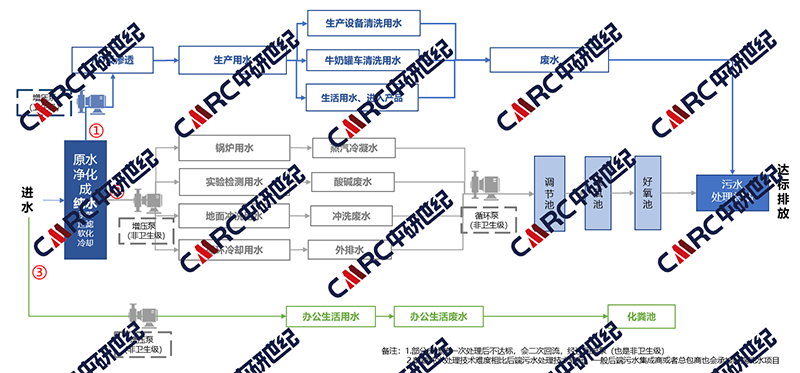

Homepage > CMRC understandings > 【CMRC understanding】Attention should be paid to the standardization of non Sanitary Pumps in dairy factories
Hits:2164 Createtime:2022-03-04 11:06:42
Attention should be paid to the standardization of non Sanitary Pumps in dairy factories. Sanitary / non Sanitary Pumps classify pumps from the use occasions of pumps, specifically involving the transportation of all products in contact with human body, such as pharmaceuticals, dairy products, beverages, food, cosmetics, food additives, fine chemicals, etc.
Pump is an indispensable and most commonly used equipment in dairy transportation. It realizes the transportation of dairy products and related fluids involved in dairy production.
In principle, the pumps used in dairy factories can be divided into two categories:
• Sanitary Pumps for dairy products themselves and all media in direct contact with dairy products (centrifugal pumps for low viscosity products, positive displacement pumps for soft treatment and high viscosity products, liquid ring pumps for high gas content).
• Processes such as preheating, cleaning and auxiliary processes ("pumps").

With the modern development of dairy factories, the use and operation of pumps become more and more important.
The water treatment flow chart of dairy plant compiled by CMRC Zhongyan century clearly combs out the use of pumps in the water treatment process of dairy plant:
1) The front-end pure water treatment system mainly uses Sanitary Pumps for the transmission of production water medium, and the production water is in direct contact with dairy products, including pipelines, pumps and other equipment. Therefore, the sanitary pumps need to meet the food grade sanitary standards.
2) The back-end wastewater treatment system applies non Sanitary Pumps, which are mainly used for auxiliary water transmission, including boiler water, ground flushing water, etc. Generally speaking, the technical difficulty of back-end wastewater treatment is higher than that of front-end pure water treatment system.
According to the Research Report on the demand research project of non sanitary pump dairy industry consulted by CMRC Zhongyan century, some domestic head dairy group factories have strict control over the production quality. Relying on their own scale advantages, they generally choose to use imported non sanitary pump products, and the rest of the smaller factories are mainly domestic brands.
As for the replacement and renewal of non Sanitary Pumps, because large dairy factories are mainly imported brands, they will strictly carry out standardized maintenance and regular maintenance of equipment. The average replacement cycle of non Sanitary Pumps is 10 ~ 12 years; Small dairy factories are mainly domestic brands. They do not have strong awareness of equipment maintenance. If the equipment is damaged or abnormal, they generally choose to replace the parts. The non sanitary pump will be replaced only if it is seriously damaged and can not be used. The average replacement cycle is about 3-5 years.
In the absence of new product planning and automatic upgrading of production line, the dairy factory will not spontaneously upgrade and replace the pumping system. At present, there are standardized standards for pump maintenance kerosene in dairy production in China, mainly based on the manufacturer's own specifications. The standardized development of pump in dairy production has a long way to go. (source: Zhongyan Century Market Research Co., Ltd. the opinions in this article are for reference only and are not used as investment suggestions!)